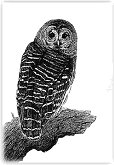You've probably heard of the old Chinese blessing/curse: “May you live in interesting times.” Well, it's been an interesting several weeks for your Home Team (building committee) and, by extension, the Board. After a long meeting, Home Team members, along with President Paul Utts, came to a solid consensus on the firm to do our site engineering. A contract has now been signed with Marathon Engineering & Environmental Services, a firm based in Absecon. We were highly impressed with Marathon's get-it-done competency and substantial experience, particularly with both Pinelands and Galloway Township. Their lead planner turns out to be the former Galloway township planner, and the firm has recently done the site planning and engineering for the newly approved Catholic church on Pitney Road as well as work on another church within the Pinelands in Galloway, along with numerous other Pinelands/Galloway projects. In a move that probably saved us a full year of delays, Marathon had advised us to move quickly in determining if springtime surveys for rare or endangered species might be required. Site engineering firms do not do this work themselves, instead either sub-contracting the work or (better, because of no overhead charges) allowing the congregation to contract out this work itself. Marathon itself suggested that to save costs we contract the work out ourselves and provided a recommendation of a local firm that could help us.
That's when it got interesting. We immediately sent a letter to Pinelands requesting clarification on the endangered species question. Although surveys for such species had not been included in Pinelands' initial response during our “due diligence” period before we bought the land in 2003, there were signs that circumstances had changed. As noted in the last newsletter, barred owls had been located in the general vicinity, and we had learned that a developer with a large block of property adjacent to ours had recently been asked to conduct assessments for several other species. Our response from Pinelands, received in mid-March, indicated that, indeed, we would be required to conduct surveys for three bird species (Barred owls, Coopers hawks, and Red-headed woodpeckers) as well as the northern Pine Snake.
The bad news: some checking with the local firm recommended by Marathon suggested that their “best rate” for doing this work would be $13,000, and perhaps substantially more if we were required, as is common for Pinelands, to do snake surveys in both spring and fall. As noted last month, Stockton ornithology professor Jack Connor (husband of Board member Jesse) has very generously offered to conduct the bird surveys for us at no charge, an immensely generous offer. Although Jack is without question well qualified to do the fieldwork and related reporting, he expressed concerns about establishing scientific survey protocols that would be a good “fit” for Pinelands submissions. Another angel has arrived in the person of Steve Whitford, an old friend of the congregation with 17 years of experience working on these issues. He has offered to provide whatever back-stop consultation we need now, including help in setting up proper survey protocols, and will accept pay on an hourly basis. At a March 22 meeting at the Connors’ home, a group of us developed a strategy for dealing with the snake issue that we believe will likely relieve us of the need to do expensive full scale surveys: Jack and Jesse's recent walk of the site, and Steve's general knowledge of the area (he arrived at the meeting with ecosystem maps) suggest we can make a scientifically solid case that there is no pine snake habitat on our site.
More good news: although it took a number of days to work out details in our engineering contract, the kickoff design meeting with project manager Chris Holaday, our architect Steve Fenwick, and our engineers is scheduled for March 30.
-- Jon Luoma

BARRED OWL (Strix varia)
This bird makes a call that seems to be saying "Who cooks for you? Who cooks for you all?" It grows to about 16-23 inches long. It's a dark grayish-brown, barred with white and vertical streaks on its belly. It lives in wooded swamps and lowland forests and drier upland forests. It mostly eats mice but will also eat small mammals, birds, reptiles, snakes, insects, and crayfish.

NORTHERN PINE SNAKE (Pituophis melanoleucus)
This snake likes flat, dry, sandy areas. It is one of the few snakes that burrow in open sandy fields. It mostly travels on the ground and occasionally climbs trees. It feeds on rabbits, rodents, birds, and their eggs. When approached it will loudly hiss and vibrate its tail - so you would think it is a rattlesnake! But it is a constrictor that squeezes its prey and will not strike. They live well in the Pine Barrens because when fires occur, it clears the forest floor for them.
That's when it got interesting. We immediately sent a letter to Pinelands requesting clarification on the endangered species question. Although surveys for such species had not been included in Pinelands' initial response during our “due diligence” period before we bought the land in 2003, there were signs that circumstances had changed. As noted in the last newsletter, barred owls had been located in the general vicinity, and we had learned that a developer with a large block of property adjacent to ours had recently been asked to conduct assessments for several other species. Our response from Pinelands, received in mid-March, indicated that, indeed, we would be required to conduct surveys for three bird species (Barred owls, Coopers hawks, and Red-headed woodpeckers) as well as the northern Pine Snake.
The bad news: some checking with the local firm recommended by Marathon suggested that their “best rate” for doing this work would be $13,000, and perhaps substantially more if we were required, as is common for Pinelands, to do snake surveys in both spring and fall. As noted last month, Stockton ornithology professor Jack Connor (husband of Board member Jesse) has very generously offered to conduct the bird surveys for us at no charge, an immensely generous offer. Although Jack is without question well qualified to do the fieldwork and related reporting, he expressed concerns about establishing scientific survey protocols that would be a good “fit” for Pinelands submissions. Another angel has arrived in the person of Steve Whitford, an old friend of the congregation with 17 years of experience working on these issues. He has offered to provide whatever back-stop consultation we need now, including help in setting up proper survey protocols, and will accept pay on an hourly basis. At a March 22 meeting at the Connors’ home, a group of us developed a strategy for dealing with the snake issue that we believe will likely relieve us of the need to do expensive full scale surveys: Jack and Jesse's recent walk of the site, and Steve's general knowledge of the area (he arrived at the meeting with ecosystem maps) suggest we can make a scientifically solid case that there is no pine snake habitat on our site.
More good news: although it took a number of days to work out details in our engineering contract, the kickoff design meeting with project manager Chris Holaday, our architect Steve Fenwick, and our engineers is scheduled for March 30.
-- Jon Luoma

BARRED OWL (Strix varia)
This bird makes a call that seems to be saying "Who cooks for you? Who cooks for you all?" It grows to about 16-23 inches long. It's a dark grayish-brown, barred with white and vertical streaks on its belly. It lives in wooded swamps and lowland forests and drier upland forests. It mostly eats mice but will also eat small mammals, birds, reptiles, snakes, insects, and crayfish.

NORTHERN PINE SNAKE (Pituophis melanoleucus)
This snake likes flat, dry, sandy areas. It is one of the few snakes that burrow in open sandy fields. It mostly travels on the ground and occasionally climbs trees. It feeds on rabbits, rodents, birds, and their eggs. When approached it will loudly hiss and vibrate its tail - so you would think it is a rattlesnake! But it is a constrictor that squeezes its prey and will not strike. They live well in the Pine Barrens because when fires occur, it clears the forest floor for them.

 Most Recent Entries
Most Recent Entries




